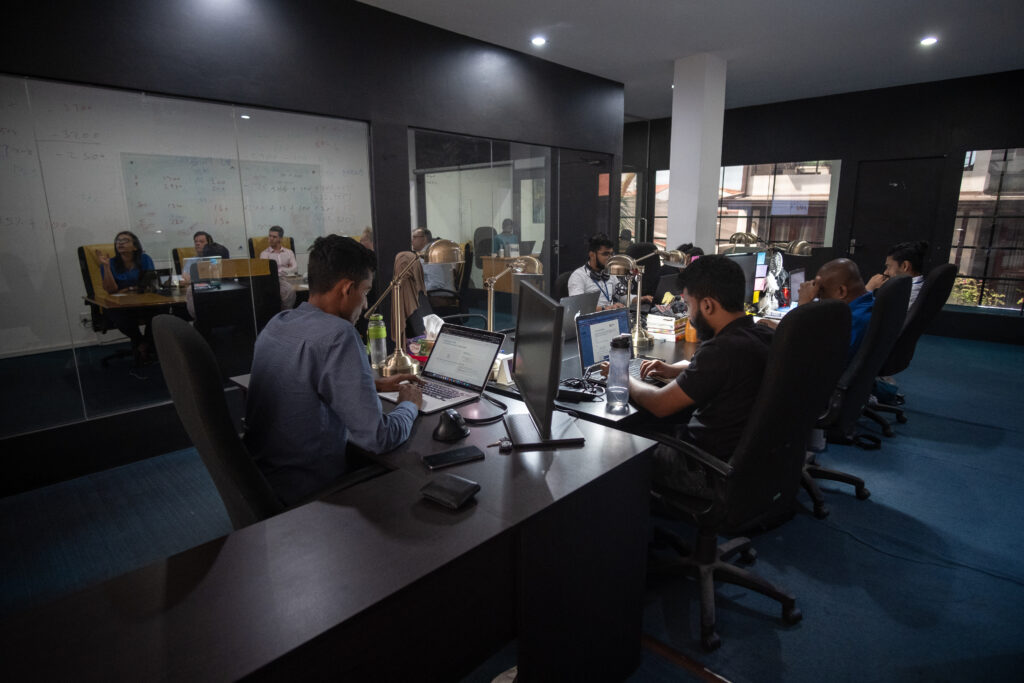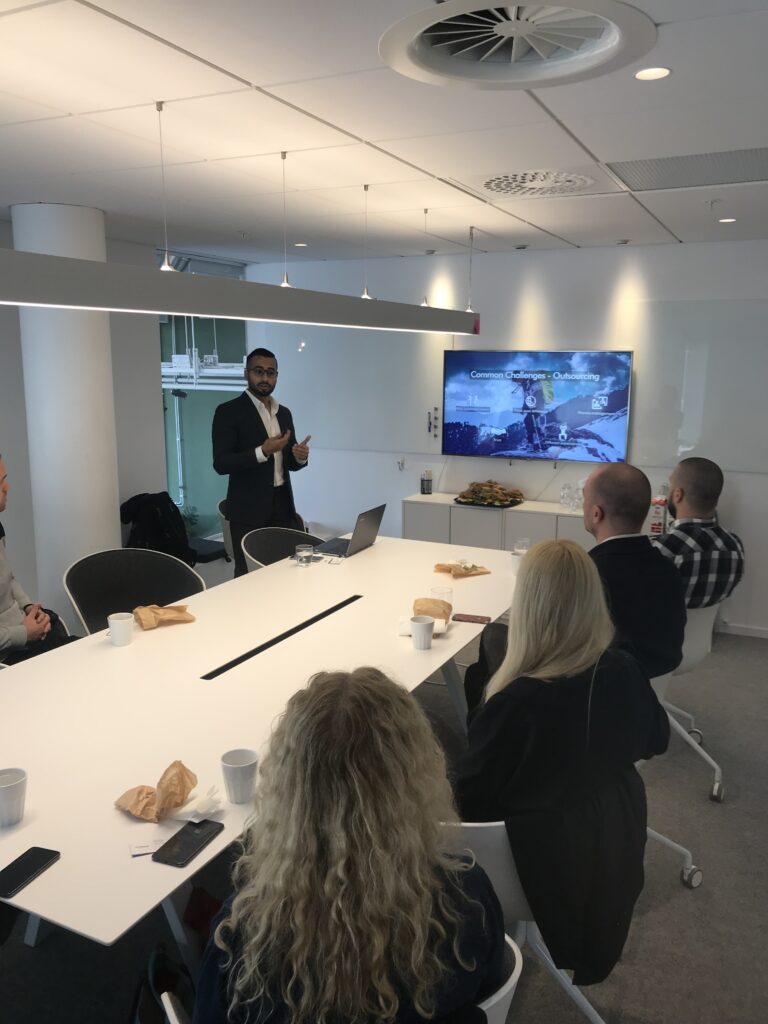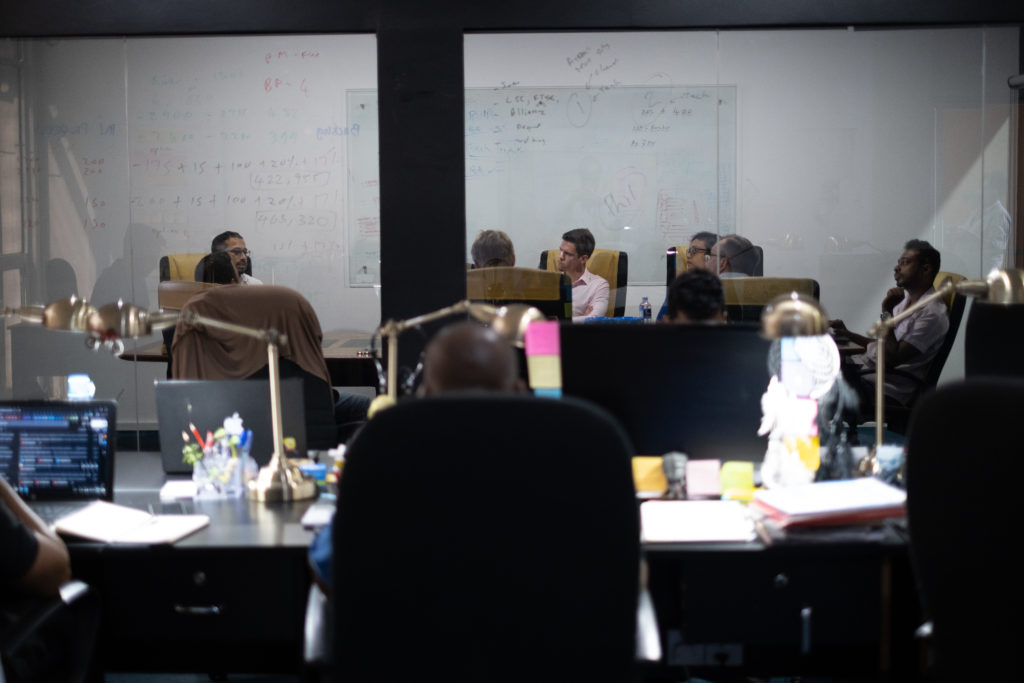

Although remote workspaces have mushroomed all throughout 2020, they aren’t necessarily a new concept. The industry of software development in Sri Lanka (and elsewhere, for that matter) has been providing offshoring services – which entails remote work by default. Together with reliable cloud support services, remote work has been made affordable and easy to setup, unlike the bulky video conferencing systems of yesteryear. If we are to go further down memory lane, home offices of qualified professionals such as architects and lawyers should also count as work-from-home concepts, now isn’t it?
We may have come a long way from isolated home offices, but pre-2020 still saw select organizations in equally select industries embracing remote work. Whether it was for sustaining multinational teams or offering flexibility, working from home was a novelty – and a luxury. As businesses emphasized on the importance of having teams based centrally in physical offices, the remote workspace concept was perceived as an embellishment (in spite of its many benefits). Come 2020, though, and remote work was not an embellishment anymore; it was an essential that determined whether your business stayed afloat, let alone thrived.
While this shift happened for obvious reasons, companies that were otherwise wary were now able to experience the myriad benefits of maintaining teams remotely. From cost-savings to increased employee efficiency, positive outcomes were tangible and very much rewarding. Considering the prevailing circumstances, remote teams are here to stay – at least for a while. Although remote work welcomes many desirable benefits, it’s still not absolute. Setbacks and loopholes still remain to be addressed. What distinguishes organizations that are successful at operating remotely from the rest is their ability to rectify or mitigate these very setbacks.
But before we delve into the nitty-gritty of what you can do to ensure your remote workspace thrives, learning about some of the most common setbacks brought on by remote work shall serve as a good starting point. This way, problems can be identified at the root, to then devise precise and targeted solutions.
The most common setbacks of remote workspaces
- Isolation.
This may not be directly related to your business, as it is more socio-psychological. But increased feelings of isolation are the most common [unpleasant] outcome of remote work, in spite of all the autonomy and flexibility that employees get to enjoy. Spontaneously greeting a fellow coworker in the corridor or sharing quick banter with another in the cafeteria are subtleties we don’t realize we have been taking for granted – until we establish our workstations at home.
- Communication gaps.
It is widely accepted knowledge that communication is more than just verbal; from gestures to body language, numerous factors intermingle to express one’s ideas and feedback. On top of that, the lack of in-person communication means that only methods such as email, instant messaging and video calling are available. As a result, there is a likelihood that items can ‘fall through the cracks’, so to speak.
While both isolation and communication gaps are fundamental setbacks when it comes to remote workspaces, they can be safely circumvented to promote greater productivity and employee well-being. The below pointers are aimed at resolving these setbacks. While your business will require customization to suit unique requirements, these tips and techniques can give you an understanding of what will work for your business, and vice versa.
The basics
- Schedule regular meetings.
Regular online meetings are the cornerstone to successfully working on a remote basis, without a doubt. As teams geographically disperse across cities, states and even the world, the need to have meetings can feel deceptively unnecessary. On top of that, team members smoothly working to achieve deadlines can further make even the shortest of meetings feel redundant. While it is important to strike the right balance between productivity and downtime, the absence of a regular meeting schedule can lead to teams working in silos.
Silos have been a perpetual problem even in brick-and-mortar workplaces. So the lack of in-person attendance can further aggravate even the slightest of silos within a remote environment. Therefore, maintaining a meeting schedule which invites relevant team members to share updates and progress pertaining to the tasks they’re working on is a fundamental yet highly effective way to stay on top of things.
Ultimately, it is the frequency and productivity level of online meetings which indicate how successful a company is with its remote work practices. In turn, this helps to determine whether such a policy should be continued – as opposed to stripping flexibility from team members by requesting them to report to the office.
- Collaborate real-time.
The technology of collaborating on one central document with multiple team members has been one of the most popular characteristics of modern business work processes. Facilitated by cloud computing, providers of hosted solutions are now a one-stop-shop for anything and everything pertaining to running a business on the cloud. Having no need to operate physical servers and other storage equipment, SaaS solutions have been a boon for companies both big and small to save money while enabling accessibility anywhere 24/7.
However, cloud providers have taken it a step further as organizations are now able to team up through dedicated partnerships (such as being an AWS partner, for instance). This offers companies everything that they need to run daily processes – while also scaling up or down if needed due to changing business circumstances. This has been one of the biggest driving factors for remote work in 2020. With quick setup and commitment-free pricing options, businesses are able to set the tone for what needs to be done, where, when and how – instead of the other way around.
Therefore, it is imperative for your business to collaborate on a real-time basis via hosted solutions. But, also think about how centralizing your company’s business systems on the cloud (or even hybridizing it by using a combination of cloud and on-premise components) can help your company reap the benefits of remote work in the long-term.
- Conduct regular company and employee reviews/roundups.
While regular reviews are crucial in any company irrespective of whether work happens in-person or remotely, they become more crucial in the wake of fluctuating economic climates and job security concerns. Reviews can be done via online meetings on an individual, department and company level, to brief employees on where the organization currently stands and where it is headed.
Reviews can go beyond the latest company happenings to feature more value-additions for team members. For example, you can use this opportunity to cross-pollinate between departments, by demonstrating what members in other departments are accomplishing to the company at large. Again, this addresses the issue of company silos. So talking about how other business units are contributing can offer employees better insight on what they can do to contribute to a more refined and mutual business goal.
This not only helps to break an otherwise monotonous work cycle, but gives employees fresh insight on how they can leverage their own duties – while being involved in exchanges that encourage engagement and a sense of belonging.
Going beyond the basics
- Schedule sessions to let off some steam.
As teams get engrossed with chasing deadlines day in and day out while being remotely distributed, the proverbial ‘chat by the water cooler’ becomes obsolete. Although a subtle few moments that aren’t given second thoughts when moving around a physical office, the absence of such happenstance interactions can really be felt when you’re working all by yourself from home. The void is ironically gaping for something that was otherwise known to be so anodyne. So how can you emulate similar experiences virtually?
This can range from being as simple as setting a particular day and time for ‘banter’ only, or organizing a fully-fledged eSports tournament for some extra fun. If it still feels like a stretch, simply creating an IM channel that is only dedicated to updates and conversations outside of what’s happening at work can inject some light-heartedness in an otherwise isolated and repetitive work cycle.
- Participate in seminars/workshops.
This goes a notch above water cooler and gaming sessions, by arranging events that employees can attend for extra education/insight outside of work. With leading conferences now operating virtually, it is easier to gain access to international events right from the convenience of your PC or smartphone. Make the most of all the virtual access by sponsoring your employees to also attend such events. Whether it’s a panel discussion on career development or a demonstration of industry-specific technology trends, ask your team members to suggest what they would prefer to attend. While this empowers employees to gain exposure to the latest for advancing their careers, it also establishes a sense of rapport towards the company.
Alternatively, identify specific employees who would also be willing to conduct training sessions for fellow coworkers. An arrangement of this sort benefits both trainer and participant; while trainers get to practice thought leadership skills, participants glean hands-on knowledge from a colleague who they may already be familiar with.
- Encourage heart-to-heart discussions.
This features a combination of remote work practices that need to be done consistently, from regular online meetings to virtual ‘water cooler’ or ‘happy hour’ sessions. On the other hand, sustaining an environment where employees are confident to voice their thoughts and feedback is the sign of a healthy workplace that’s coupled with strong leadership. Remote or not, it’s the calibre of leadership that will eventually determine how transparent your employees are with you. To put it simply, do they ever approach higher-ups to discuss concerns? If so, how often, and are there any specific topics that are most commonly broached?
While this isn’t specific to remote workspaces, the importance of encouraging open discussion is something that can never be stressed too much. Doing a combination of all the above pointers is what will establish the right mojo for employees to feel confident enough to share. This is something which business leaders need to now think about from a fresh new perspective, as remote work policies introduce the constraint of distance that needs to be alleviated for smoother communication.
To start, intently listen to what employees have to say during regular work meetings. Not every opinion may be viable or even executable. But intent listening will gradually yet organically instil a sense of trust in your employees – which will only strengthen rapport and transparency in the long run.
In conclusion…
Remote work exploded in popularity and demand in 2020, and this trend is only here to stay – at least for a substantial period of time. Apart from offering unmatched flexibility and less downtime, remote work still comes with certain caveats. How well these setbacks are addressed will determine the overall success rate of your remote work policies. But at a time when remote workspaces are one of the most advisable solutions for business continuity, it is imperative that you establish a productive yet sustainable remote work environment for your teams to thrive in.
Isolation and gaps in communication are two of the most common setbacks when it comes to remote workspaces. However, both can be rectified by opting for a combination of good remote work practices that can get everyone accustomed to performing well within a distributed team.
Regular online meetings, while a basic requirement for remote work, is foundational for building transparency and trust amongst your team members. Real-time document collaboration not only removes version-related hiccups, but also vastly streamlines the remote work process. Regular reviews and roundups may once again be mundane, but they form an integral stepping stone towards understanding what really makes your employees tick all the way to an individual level.
Go beyond the basics by engaging your employees further via conferences, seminars, workshops and interactive training sessions that can be conducted by existing employees. Virtual water cooler sessions, happy hours and even gaming tournaments can further create positive buzz, thereby reducing the chronic isolation that can significantly impact employee productivity and well-being.





